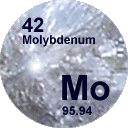|
||||||||||||
|
 |
 |
 |
| Stunning Atlin Lake | Ruby Creek | Ruby Creek |
 |
 |
 |
| Ted on Ruby Creek core | Ted discovers MOLY | Drill core Ruby Creek |
One of the things I have talked to Larry about before and that I wanted to verify on my visit, was the issue of grade. Since all Larry has was historical and non-43-101 compliant numbers, he had to spend millions of dollars drilling holes where he pretty much knew what he was going to get. And all of the previous holes were vertical holes, not holes drilled at an angle. Many times structures and mineralization tends to be vertical. So it's entirely possible to drill straight down six inches from a perfectly vertical ore body and never find a thing. Larry wanted to be drilling angle holes years ago but in order to use any of the previous data, he had to drill twinning holes and if the original was vertical, the new hole right next to it had to be vertical.
It rubbed Larry the wrong way because all of the bulk samples taken showed higher grades than the drill holes showed. Clearly something wasn't correct. And when I saw the core from this year's angle drilling, Larry was proven right. In most of the core, if the angle of the hole was 60 degrees, the mineralization was 60 degrees, meaning the ore was vertically oriented. Larry can't use his results from this year to increase the 43-101 resource or the grade. But he can increase his confidence level that the grade mined will in fact be higher than the drill results.
In fact, part of the work done by Kerr Addison Mines in 1971 indicated their bulk samples showed grades up to 20% higher than drill results. So, as part of the economic model, a sensitivity study showing a grade increase of only 15% was assumed and it increased the IRR to 35.03% and the NPV to a whopping $405 million Canadian.
Using High Pressure Grinding roll, (HPGR) for grinding increases the NPV from $222 million to $305 million, well worth doing. Taking into account the grade increase of 15% which has a high confidence number and the HPGR which Larry announced months ago, it's easy to say the stock is cheap today.
As yet, no one has stepped up to the plate, $434 million is a big number to swallow. Larry has had a number of discussions with steel milling companies about forward sales of moly. It's a case where he could sell all the moly he could produce today at a great price but people are afraid of the price dropping as it has so many times in the past. Larry has pretty much maintained an 18-month lead time over anyone else who might go into large scale production of moly. Several small juniors are either producing moly today or are about to. I have written about Roxmark (RMKL-C) before, they are producing now. Golden Phoenix (GPXM-OTCBB) is about to begin production in a month or so in a high grade but small deposit in Nevada, and Roca Mines (ROK-V) is saying production in the 4th quarter.
The price of moly has stayed higher longer than anyone would have guessed two years ago. The Chinese do not appear to want to export moly any longer, they have shut down about half their production capability, being more eager to buy moly than to produce it. That reduces the risk of moly being dumped. The longer the price stays high, the more attractive Adanac becomes. It would be far more attractive if the BC government would commit to bringing in power and connecting Atlin to the grid. But government blather a lot and for the first few years, Larry Reaugh is accepting that he probably will have to use expensive diesel power.
With a market cap of about $60 million, Adanac is very attractive. It's entirely possible that someone could attempt to buy the company or buy control at any time. Obviously Larry Reaugh would sell. At a price. And that price will be a lot higher than it is today.
We were big buyers of AUA in the $.50 area two years ago. When the stock shot up into the stratosphere in April, we were looking at a 400% long term capital gain which was very attractive, I buy stocks in the hope of them going up. We don't own shares in AUA today but we are biased and would be buyers at any lower prices. Adanac is an advertiser but has not paid to have this produced.
Written in East End, Grand Cayman on September 28, 2006.
Adanac Moly
Corporation
AUA-V $1.15 Canadian (September 28, 2006)
ANCGF-OTCBB
56.1 million shares
Adanac Moly website
Bob Moriarty
President: 321gold
Archives

 Revisiting
Miss Moly
Revisiting
Miss Moly